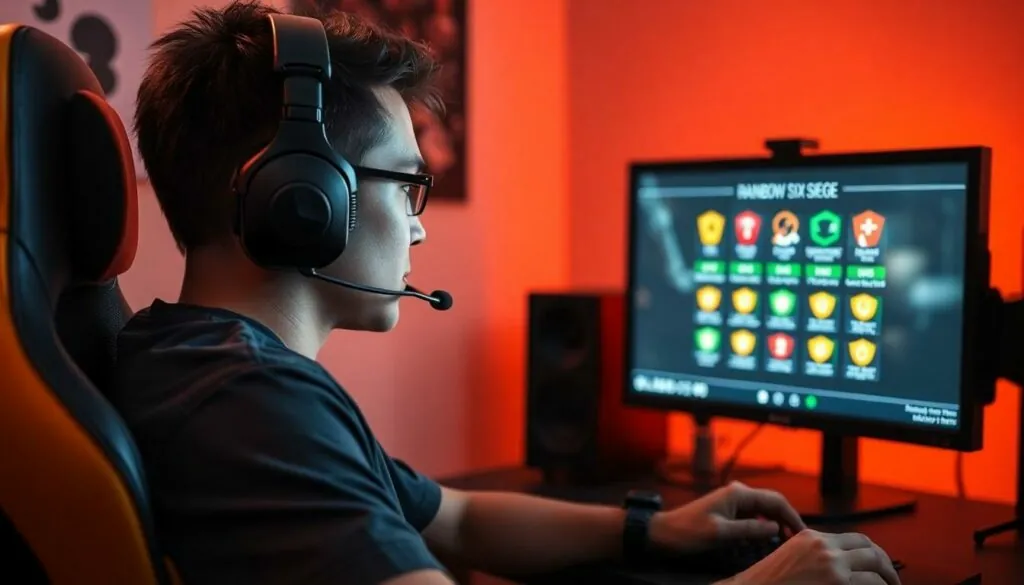In the world of Rainbow Six Siege, rankings aren’t just numbers; they’re the lifeblood of competitive play. Climbing the ranks feels like scaling a digital Everest, complete with sweaty palms and the occasional rage-quit. Whether you’re a seasoned pro or a fresh recruit, understanding how the ranking system works can make the difference between glory and those dreaded matchmaking nightmares.
Table of Contents
ToggleOverview of Rainbow Six Siege Rankings
Rainbow Six Siege employs a ranking system that influences competitive gameplay significantly. Players begin their journey in the Copper rank and strive to reach the highest rank, Champion. Each tier consists of several divisions, with the highest being Diamond, which boasts upper and lower classifications.
Understanding rank progression helps players navigate their experience more effectively. Matchmaking algorithms consider players’ skill levels, ensuring teams are balanced for competitive play. Teamwork and communication often determine success in higher ranks.
Ranks in Rainbow Six Siege include Copper, Bronze, Silver, Gold, Platinum, Diamond, and Champion. Players earn ranking points by winning matches, with losses resulting in point deductions. Performance in matches, such as kills, assists, and objectives achieved, also affects rank changes.
Players might face challenges when adjusting to different ranks. High Diamond players often encounter intense competition from skilled opponents, whereas those in lower ranks can find the gameplay less predictable. Navigating this system requires understanding one’s strengths and weaknesses as well as team dynamics.
In addition, the seasonal reset affects players’ ranks annually. Each season introduces adjustments to the ranking system, which helps maintain balance in competitive play. Players need to be familiar with these changes to strategize effectively.
Overall, a clear grasp of the ranking system in Rainbow Six Siege enhances players’ gaming experience. Awareness of rank tiers and the importance of teamwork enables players to improve and enjoy the competitive environment of the game.
Ranking System Explained
Understanding the ranking system in Rainbow Six Siege is essential for players aiming to climb the competitive ladder. The system is designed to classify players based on their skill levels and performance.
Matchmaking Ranks
Matchmaking ranks serve as the backbone of competitive play. Players start at the Copper rank and can ascend through Bronze, Silver, Gold, Platinum, and Diamond, ultimately reaching Champion. Each rank consists of multiple tiers, allowing for more refined classification of skill levels. Players earn ranking points by securing match victories, while losses result in point deductions. Performance metrics, including kills and completion of objectives, significantly influence rank changes. Communication and teamwork become increasingly critical as players advance, ensuring successful matches in higher ranks.
Seasonal Rankings
Seasonal rankings introduce an annual reset, impacting player standings and matchmaking dynamics. Each new season brings adjustments that help maintain balance within the competitive environment. Players retain progress from previous seasons but may experience shifts in rank due to changes in skill distribution. Seasonal resets encourage players to reassess their strategies and improve their gameplay. Understanding these changes is vital for adapting to the evolving competitive landscape of Rainbow Six Siege. Regular engagement with the ranking system enhances the overall gaming experience and fosters a more competitive atmosphere.
Importance of Rankings in Gameplay
Rankings in Rainbow Six Siege play a vital role in shaping gameplay experiences. Understanding these rankings helps players navigate competitive and casual scenarios more effectively.
Competitive Play
Competitive play centers on skill and strategy. Players ascend through ranks, starting from Copper to Champion, which reflects their performance level. Not only does this system challenge players to improve, but it also fosters intense competition. Each match offers opportunities to earn ranking points based on victories and individual contributions. High rankings require seamless teamwork and communication, which are essential for victory. Adjusting to different rank tiers often presents challenges, as higher ranks introduce tougher opponents. Recognizing these dynamics allows players to refine strategies and enhance gameplay, promoting an engaging environment.
Casual Play
Casual play offers a relaxed alternative to competitive ranks. Players still encounter rankings, but the pressure is reduced. Engaging in casual matches allows for experimentation with different operators and strategies without significant penalties. Although ranks fluctuate, they primarily serve as an indicator of skill level rather than strict competition. This setting encourages camaraderie and social interaction, making it accessible to both newcomers and seasoned gamers. Familiarity with the ranking system enhances enjoyment, as it helps players appreciate their growth and progress. In casual play, understanding rankings remains important, as it influences matchmaking and overall experience within the game.
How to Improve Your Ranking
Improving ranking in Rainbow Six Siege requires focused efforts in skill development and team coordination.
Skill Development
Mastering gameplay mechanics enhances performance significantly. Players should prioritize map knowledge, which provides strategic advantages during matches. Improving aim through practice in the shooting range boosts accuracy. Utilizing operators effectively contributes to overall team success. Analyzing gameplay footage helps identify mistakes and areas for development. Engaging in challenges or solo-queue games increases adaptability to various situations. Setting specific goals fosters continuous growth. Each session dedicated to refining skills can lead to meaningful progress in ranking.
Team Coordination
Building strong team dynamics leads to improved rankings. Communication plays a crucial role, enabling players to share information about enemy movements and strategies. Regular practice sessions with consistent teammates enhance synergy. Developing specific roles for each player strengthens team efficacy. Implementing callouts for strategies fosters a quick response to changing circumstances. Adapting strategies based on opponents’ tactics can turn matches in their favor. Prioritizing teamwork ultimately elevates the entire team’s performance in competitive matches.
Common Ranking Challenges
Players face various challenges when navigating the ranking system in Rainbow Six Siege. Understanding these obstacles helps improve performance and enhances the gaming experience.
One major issue involves the skill disparity among players. Newcomers often compete against more experienced players, leading to frustrating matches and potential demotivation. Adjusting to different ranks requires players to adapt quickly to varying competition levels.
Team communication significantly affects ranking progression. Poor communication, especially in high-stakes matches, can hinder teamwork and lead to missed opportunities for victory. Developing a solid communication strategy enhances collaboration and ultimately boosts overall performance.
Another challenge lies in the seasonal reset of ranks. This annual adjustment can disrupt a player’s sense of achievement, necessitating re-evaluation of strategies. Adapting quickly to these changes demands resilience and continued skill development.
Performance metrics also play a crucial role. Factors such as kills, assists, and objective completion directly influence rank changes. Players often struggle to consistently meet performance expectations, making continuous improvement essential.
In addition, emotional resilience impacts ranking success. Players may experience frustration or anxiety, particularly after several losses. Managing these emotions becomes crucial for maintaining focus and performance during matches.
Understanding the ranking challenges equips players with the tools needed to improve. Staying informed about the ranking system fosters a strategic mindset essential for overcoming obstacles. Emphasizing skill development, teamwork, effective communication, and resilience leads to a more rewarding gaming experience in Rainbow Six Siege.
Conclusion
Rainbow Six Siege rankings are more than just numbers; they represent a player’s journey and growth within the game. Understanding the intricacies of the ranking system empowers players to navigate challenges and enhance their skills. By focusing on teamwork communication and strategy players can elevate their gameplay and enjoy a more fulfilling experience.
As the competitive landscape evolves with seasonal resets and shifting skill distributions players must remain adaptable and resilient. Embracing the challenges of ranking up not only improves individual performance but also fosters a sense of community among teammates. Ultimately a strong grasp of the ranking system enriches the gaming experience making every match an opportunity for growth and achievement.





